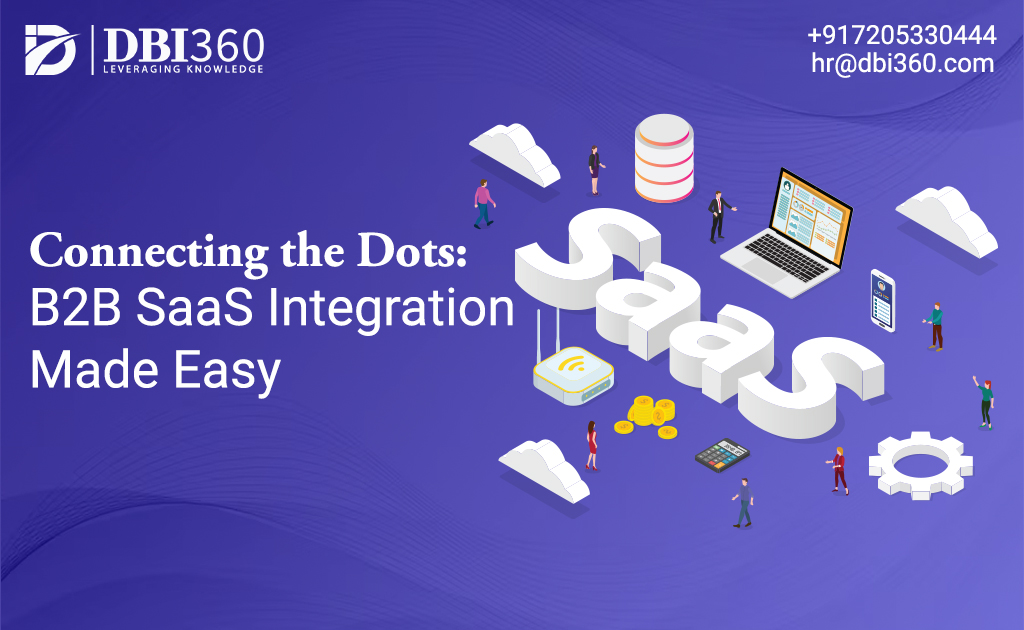In today’s fast-paced business environment, the importance of seamless integration between different software systems cannot be overstated. As businesses increasingly rely on multiple B2B SaaS integration (Software as a Service) solutions to streamline their operations, the need for these systems to work together efficiently has become crucial.
To achieve this, organizations must focus on building a connected ecosystem where different SaaS applications seamlessly integrate and share data. In this blog post, we will explore the best practices for B2B SaaS integration to help businesses create a cohesive and efficient software ecosystem.
#1 Define Integration Objectives and Requirements:
Before embarking on any integration project, it is essential to clearly define your integration objectives and requirements.
-
Identify the specific business processes that need to be integrated and determine the goals you want to achieve.
-
It could include streamlining workflows, reducing manual data entry, improving data accuracy, or enhancing decision-making capabilities.
-
By setting clear objectives and requirements, you can ensure that the integration efforts are aligned with your business needs.
#2 Choose Integration-Friendly SaaS Applications:
When selecting SaaS applications for your business, it is crucial to consider their integration capabilities.
-
Look for applications that offer robust APIs (Application Programming Interfaces) or pre-built connectors for easy integration with other systems.
-
APIs allow different software applications to communicate and exchange data seamlessly. Additionally, consider whether the SaaS vendor has a track record of successful integrations and provides dedicated support for integration efforts.
#3 Use a Centralized Integration Platform:
A centralized integration platform acts as the hub for connecting and managing your various SaaS applications.
-
It provides a unified interface for integrating, monitoring, and managing data flows between different systems.
-
With a centralized platform, you can avoid point-to-point integrations that can quickly become complex and difficult to manage.
-
Look for integration platforms that support a wide range of connectors and offer features like data mapping, transformation, and error handling.
#4 Ensure Data Consistency and Accuracy:
Maintaining data consistency and accuracy across integrated systems is crucial for making informed business decisions.
-
Standardize your data formats and definitions across applications to ensure seamless data flow. Implement data validation and verification processes to identify and rectify any inconsistencies or errors that may arise during integration.
-
Regularly monitor data quality and perform data cleansing activities to eliminate duplicates and outdated information.
#5 Implement Robust Security Measures:
Security should be a top priority when integrating SaaS applications. Ensure that the integration platform and all connected systems adhere to industry-standard security protocols.
-
Implement strong authentication mechanisms, such as two-factor authentication, to safeguard access to sensitive data.
-
Encrypt data during transmission and storage to prevent unauthorized access. Regularly audit and monitor your integration processes for any security vulnerabilities or breaches.
#6 Consider Real-Time Integration:
In many cases, real-time integration is essential for businesses to operate efficiently.
-
Real-time integration allows data to flow instantly between systems, enabling up-to-date information for decision-making and reducing manual effort.
-
When selecting an integration platform, consider its real-time capabilities and whether it can handle the volume and velocity of data exchanges required by your business processes.
#7 Plan for Scalability and Future Growth:
As your business evolves and grows, your integration needs will change. Ensure that your integration strategy is scalable and can accommodate future expansions.
-
Choose an integration platform that can handle increasing data volumes, new SaaS applications, and changing integration requirements.
-
Plan for regular maintenance and updates to keep your integration ecosystem up to date-and aligned with your business goals.
#8 Monitor and Maintain Integration:
Integration is an ongoing process that requires continuous monitoring and maintenance. Regularly review and monitor data flows, error logs, and performance metrics to identify any issues or bottlenecks.
-
Implement automated monitoring and alerting mechanisms to proactively address integration failures or data inconsistencies.
-
Maintain a documentation repository that captures integration workflows, configurations, and troubleshooting guidelines to support future maintenance and onboarding efforts.
The Bottom Line
Building a connected ecosystem through B2B SaaS integration is vital for businesses aiming to streamline their operations and improve efficiency. By following these best practices, organizations can create a cohesive software ecosystem where different applications seamlessly integrate and share data.
Clear objectives, careful selection of integration-friendly SaaS applications, centralized integration platforms, data consistency, security measures, real-time integration, scalability planning, and ongoing monitoring and maintenance are key factors for successful B2B SaaS integration.

